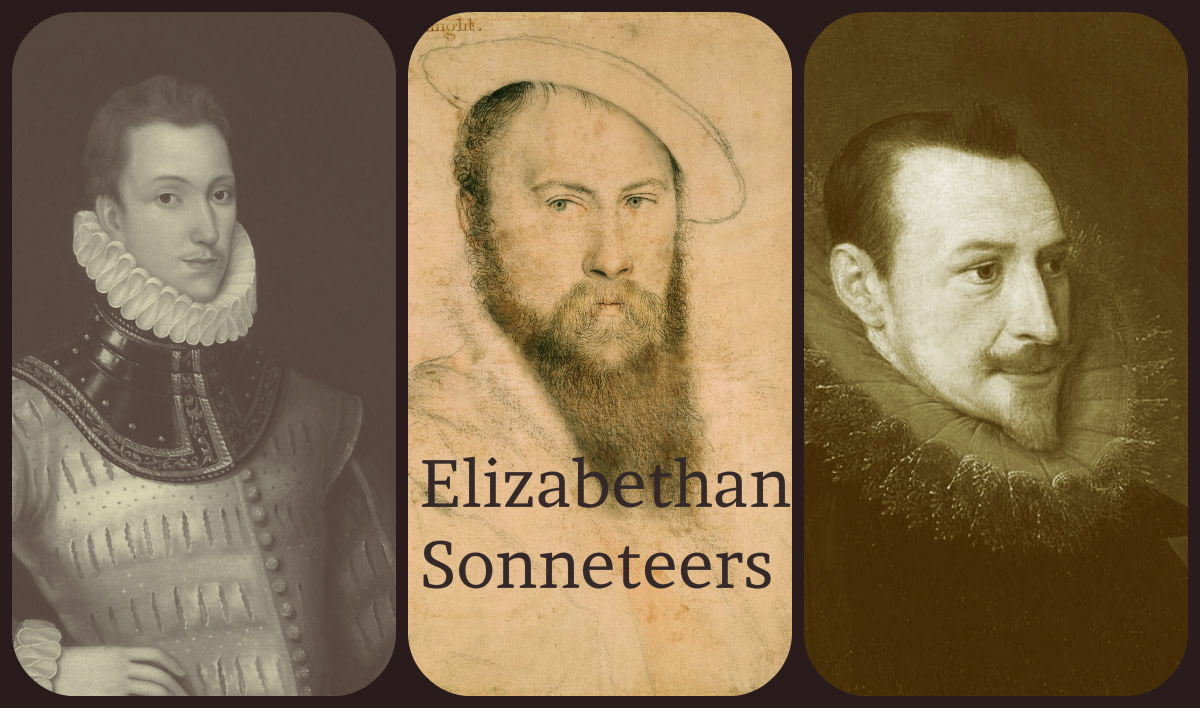The Faerie Queene by Edmund Spenser - more of the King Arthur legend
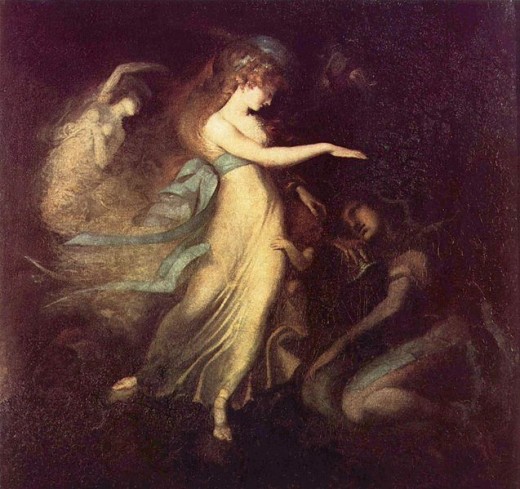
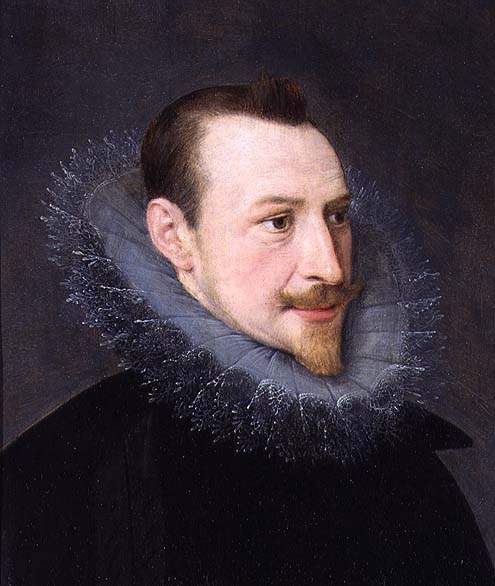
Edmund Spencer 1552-1599
More of the King Arthur legend can be found in Edmund Spencer's epic poem and masterpiece, The Faerie Queene. Spencer, one of England's greatest literary poets lived during the Elizabethan Era, the reign of Elizabeth I of England. He was so devoted to his queen that he wrote The Faerie Queene as a great allegory and epic poem to support his queen, Elizabeth I. Spenser spent most of his life writing this great masterpiece that was actually never completed at the time of his death.
Edmund Spenser was born in 1552 and studied at Cambridge University. The first major work he published was Shepheardes Calender in 1579. The next year he started composing one of the greatest poems in the English language and would continue writing it until his death in 1599. At the time of his death he had only completed one half of what he had planned to write.
During his life, Spenser was a devout Protestant and defender of Elizabeth I in her conflicts with the Catholic Church. Spenser saw the Catholic Church as evil and full of corruption and the wrong religion and anti-religion of England. The many battles in The Faerie Queene represent the battles between England and Rome.
Spenser also justifies the Tudor Dynasty and Elizabeth I as the rightful and just queen of England by basing the poem on the English Arthurian legend. He sought to connect Elizabeth to King Arthur to "prove" Elizabeth I and the Tudors were descended from King Arthur and her monarchy was true and just. He took his Arthurian legend from Geoffrey of Monmouth's account of Arthur in Prophetiae Merlini (Prophecies of Merlin) previously written in the 1100's. Arthur is the central hero of the poem who is in search of the Faerie Queene whom he saw in a vision. The Faerie Queene of course represents Elizabeth I.
Spenser had written 12 books of The Faerie Queene at the time of his death. Each book contains a knight representing a particular Christian virture as he/she would convey to the court of the Faerie Queene. The poem takes place in a mythical land and The Faerie Queene is intended to relate to Spenser's England which had replaced the Roman Catholic Church with Anglicanism as the national religion.
The poem is about the adventures of knights, dragons, damsels in distress etc. and an extended allegory about moral life and what makes for a life of virture.
Spenser used the Spenserian stanza in his poem which consisted of iambic pentameter as the main meter used (u`u`u`u`u`u) with a final line in iambic hexameter (` ` ` ` ` `) six stressed syllables in a row. (also called the Alexandrine). The rhyme scheme of each stanza is ababbcbcc.
Edmund Spenser also invented the Spenserian sonnet which was the melding together of the Shakespearean and Petrarchan sonnets. The Shakespearean sonnet has three quatrains and one couplet and in the Petrarchan sonnet the conclusion follows from the argument. His sonnets were written in this manner.
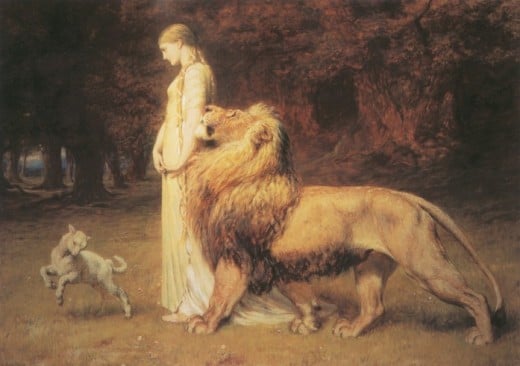
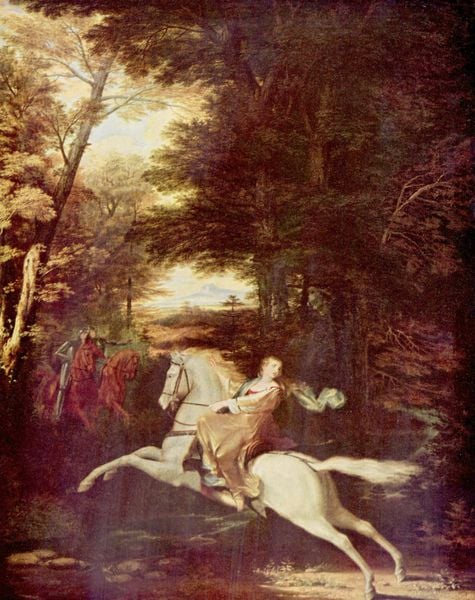
The Faerie Queene
As Edmund Spenser wrote his epic poem, he created one of the greatest allegories of the English language. Of the twelve books in the poem Spenser wrote, Books I and III are the most read, most popular and most critically acclaimed of them all. The poem follows the journeys of two knights and examines the two virtures Spenser considered most important for men to acquire a good and fulfilling Christian life - Holiness and Chastity. The characters of the "Faerie Land" Spenser created have symbolic meaning in the real world which at the time was the Elizabethan Era.
The characters in The Faerie Queene are as follows:
- Arthur - the central hero of the poem and in search of the Faerie Queene whom he saw in a vision. (see painting above, under the title)
- Faerie Queene (also called Gloriana) - the focus of the poem although we never really see her in the poem because the poem is uncompleted. This character of course represents Elizabeth I.
- Redcrosse - the knight and hero of Book I. He represents the virtue of Holiness. His real name is George and he eventually becomes St. George (of the Dragon) and becomes the patron saint of England. He represents the individual man fighting against evil - or allegorically, the Protestants fighting the Catholic Church.
- Una - Redcrosses' future wife. She represents Truth which Redcrosse must find to be a true Christian.
- Duessa - She represents Falsehood. Her beauty is only skin-deep. She nearly steals Redcrosse away from Una.
- Archimago - a sorcerer who can help change his own appearance or that of others. In the end his magic is proven week and ineffective when up against the virtues of Holiness and Truth.
- Britomart - the heroine of Book III. A female warrior virgin who represents Chastity. She desires true Christian love and searches for her future husband. She is a skilled fighter, strong of heart, and calm in times of trouble.
- Florimell - a female character in Book III. She represents Beauty. She is chaste but constantly is hounded by men who go mad with lust for her. She loves one knight who seems to be the only character who doesn't love her.
- Satyrane - son of a human and a satyr (1/2 human and 1/2 god creature). "Nature's Knight" and he represents the best man can be without benefit of Christianity.
Many more characters appear in The Faerie Queene but these are the most important protagonists and antagonists in the epic poem's story. Since Spenser never completed the poem before his death, we never see a resolution to the conflicts between the protagonists and antagonists in this Arthurian legend. Even the Faerie Queen herself never has her unifiying court scene at the end. The public and the court understood the political and religious statements Spenser was making through his allegorical epic poem, and especially, Queen Elizabeth I, for whom the entire poem was written to support.
Interestingly, Spenser wrote his poem in Old English which is roughly the type of English Chaucer wrote in when he wrote the Canterbury Tales. Although Spenser was living during the time where Middle English was being used He felt the Old English form was more condusive to connecting King Arthur to Elizabeth I and the Tudor Dynasty. Again, it is probably easier for the modern reader of today to read an English translation of the original poem than the difficult Old English in which Spenser wrote his poem.
Source:
Spenser, Edmund. The Faerie Queene. The Norton Collection of English Literature, Vol. I.



